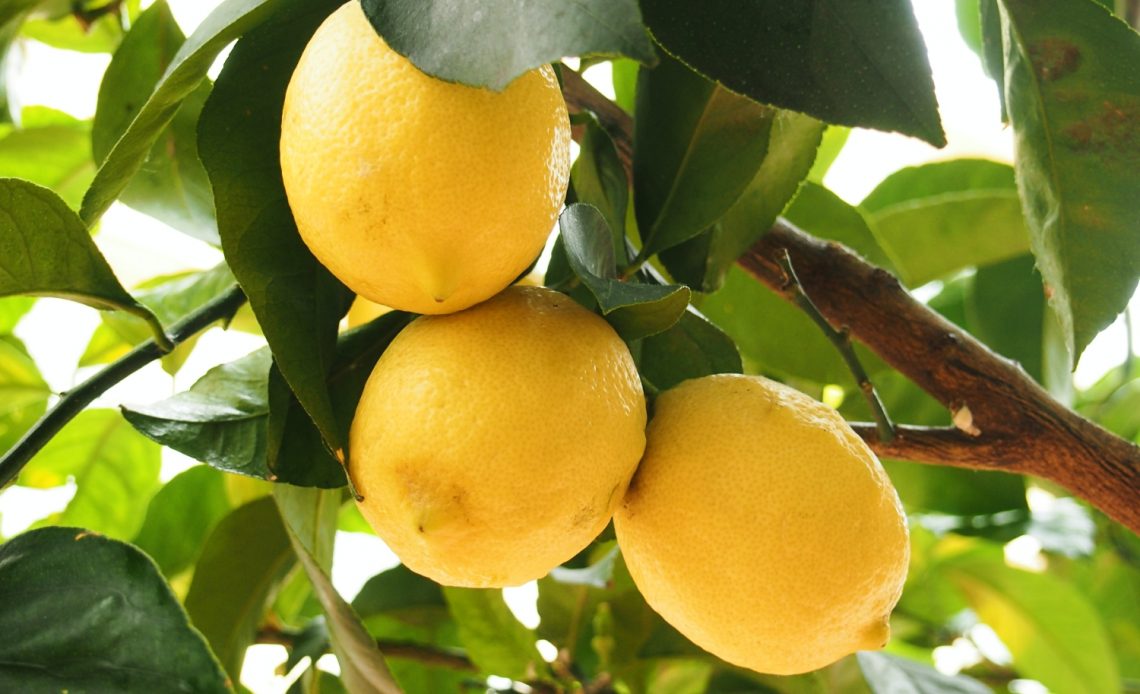

We’re here to help! Wild Yards is a completely free website that is 100% dedicated to helping you create a wildlife-friendly, sustainable yard. Read more
WildYards is reader-supported. When you buy a product through a link on our site, we may earn a comission. Every product is independently selected by our (obsessive) editors and our reviews are unbiased and objective. Read more about our mission or our privacy policy.
Lemon trees are an excellent choice for gardeners who are new to growing fruit trees or who simply don’t have much room. Small varieties, like dwarf Myer lemons, are easy to keep in any space, even if you only have a tiny patio. Additionally, because these trees don’t require much upkeep, they’re ideal for gardeners who want fresh fruit but don’t have much time to devote to their plants. Yet, as easygoing as lemon trees are, they’re not immune to problems. If your lemon tree has yellow leaves, it’s a sign of an underlying issue that needs to be addressed.
Nutritional deficiencies, insect infestations, and overwatering are often to blame when it comes to yellow leaves in lemon trees. However, inappropriate soil conditions and extreme weather can also contribute to yellowing foliage.
8 Reasons your lemon tree’s leaves turned yellow and solutions that really work
If you’ve grown citrus trees in the past then you know it’s not unusual for a lemon tree to develop yellow leaves. In mild cases, where only a handful of the plant’s leaves have turned yellow, the issue may correct itself in time. But if a significant portion of your lemon tree’s foliage has turned yellow, it’s time to take a closer look. Correctly identifying the underlying problem is key to treating it successfully.
The problem: overwatering
When a lemon tree’s roots sit in water for prolonged periods that leaves the roots susceptible to rot. If the plant’s soil is so saturated with water that oxygen can’t penetrate, then the lemon tree’s leaves will turn yellow. If the soil doesn’t dry out quickly, the foliage may even die back, killing large sections of the tree. Stick your finger two or three inches below the surface. If the soil feels soggy, there’s a good chance your lemon tree’s yellow leaves are the result of overwatering.
The solution: improve drainage and scale back on watering
Whether your lemon tree is suffering from overwatering due to excess rainfall or human error, you need to act fast. If your lemon tree is potted, drill holes in the bottom of the planter to allow water to escape. If your lemon tree is growing in the ground, then use a garden hoe to dig a trench to divert standing water, and use coarse sand, or a potting soil mix designed for lavender to dry things up. If your lemon tree is sitting in a low spot in your yard, your best bet would be to transplant it to higher ground. Follow our guide for transplanting to improve your lemon tree’s chances of success in its new home. Always check the soil moisture level beforehand to avoid overwatering your lemon tree. When the soil feels dry at a depth of two inches, it’s safe to water the tree again.
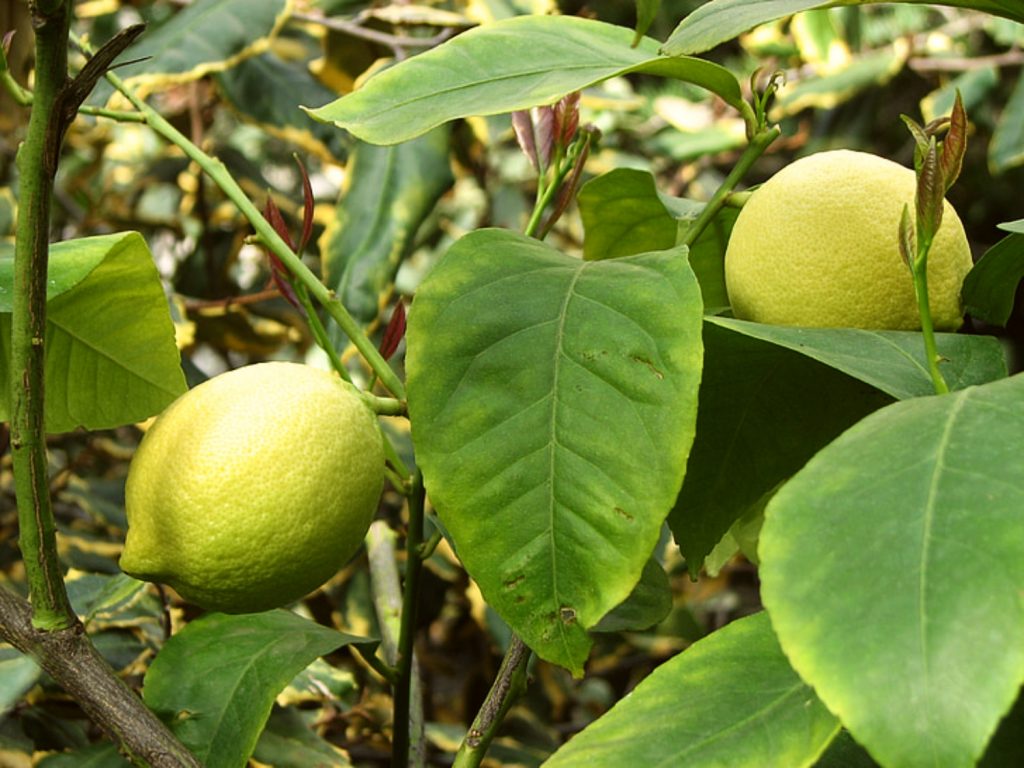
The problem: insufficient water intake
Overwatering can cause a lemon tree’s leaves to turn yellow, but so can underwatering. If your ecoregion is going through a drought, or if you were out of town for a couple of weeks and you forgot to ask your neighbor to water your plants, then your lemon tree could probably use a drink. Once again, you’ll need to check the soil to determine the moisture level. If the dirt feels dry and powdery two to three inches below the surface, especially if the leaves are turning brown and curling, then your lemon tree needs more water.
The solution: water the lemon tree more often
If your lemon tree’s foliage has turned yellow and if it just looks sad and droopy, give it a good watering early in the morning, and see if that doesn’t help it perk back up. Even though lemon trees like well-draining soil, they still appreciate a good soak every now and then. Once your underwatered lemon tree recovers, be sure to put it on a regular watering schedule. Check the soil every three days. When it dries out two inches below the surface, water it thoroughly. As your lemon tree becomes rehydrated, its new leaves will sprout a healthy green color.
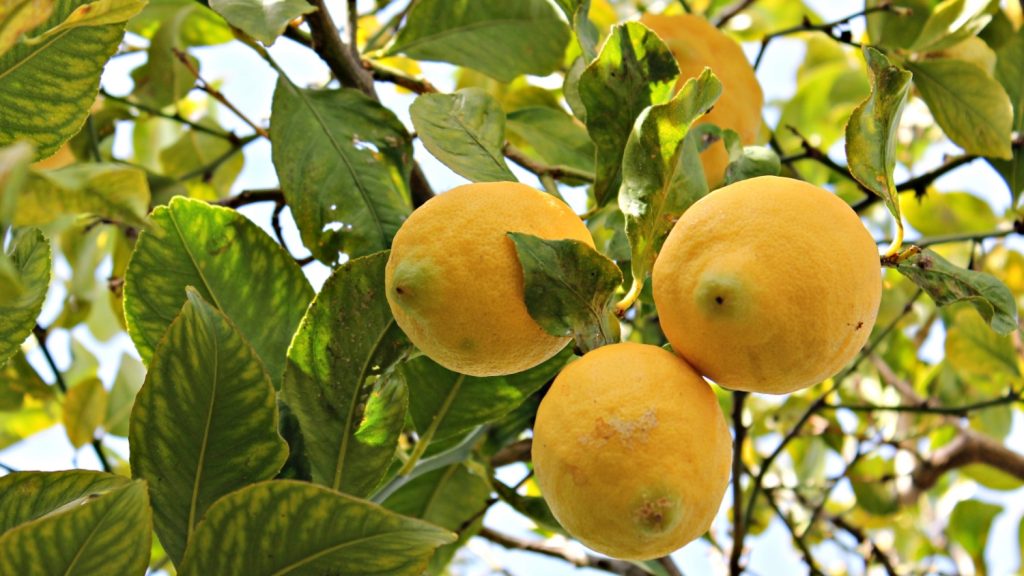
The problem: nutritional deficiencies
Lemon trees are heavy feeders during their blooming and fruiting periods. If they don’t have enough vitamins and minerals to produce healthy fruit and healthy foliage, then the plant will prioritize the fruit, and the leaves will turn yellow as a result. Common mineral deficiencies in lemon trees include:
- Nitrogen deficiency — low levels of this mineral lead to yellowing foliage throughout the plant. You may also find your lemon tree grows more slowly overall.
- Potassium deficiency — this mineral plays a crucial role in a plant’s drought tolerance. Low levels of potassium can contribute to yellowing foliage, and plants are more likely to wilt in the sun, even with regular watering.
- Iron deficiency — also called iron chlorosis, lemon trees with iron deficiency develop yellow leaves, but the veins stay deep green. Iron deficiency tends to affect new leaves first.
Lemon trees rely on a variety of nutrients to stay healthy. Low nutrient levels can certainly cause yellow leaves, but they can also lead to stunted growth and poor fruit production.
The solution: feed the tree
Use an at-home soil test kit to determine which nutrients your soil is lacking. This will help you choose the best fertilizer for the tree. Low levels of one or two minerals are easy enough to correct. Simply add a dose of the missing minerals. But if you find your lemon tree’s soil is missing multiple minerals, then use a fertilizer specifically for citrus trees to give the soil a nutritional boost. Once the plant gets all of the vitamins and minerals it needs to grow well, it will begin producing green leaves again.
The problem: insect infestation
Lemon trees can play host to a number of garden pests. Grasshoppers, spider mites, weevils, whiteflies, and aphids are just a handful of bugs known to prey on the plant’s foliage. Inspect your lemon tree’s leaves carefully for signs of insect infestation. These bugs like to hide on the undersides of leaves. Look for holes in the leaves, chewed edges, and groups of eggs. If your lemon tree’s yellow leaves are the result of an insect infestation, improving its appearance will be a matter of eliminating the bugs.
The solution: use an insecticide
If you only see a few bugs on your lemon tree, you can pick them off by hand, or use a garden hose sprayer to physically remove them from the foliage. But if the infestation is extreme, you’ll need something stronger to help you tackle the problem. Purchase an insecticide from a local garden center, or use one of our homemade insecticide recipes to treat the infestation. It may take several applications to get pest levels under control, but be persistent. Trimming away affected foliage will also help the plant recover by stimulating new growth.
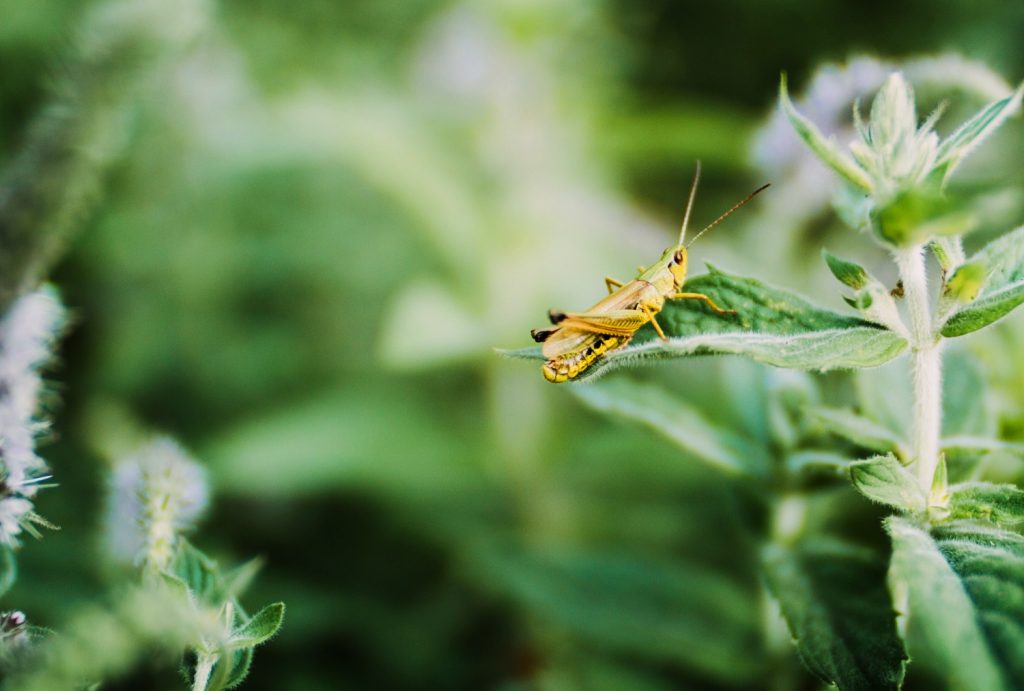
The problem: dry air
Lemon trees like humid conditions. If you have a potted indoor lemon tree, the dry air from heating and air conditioning can cause excessive moisture loss. Over time, this stresses the lemon tree and results in yellowing foliage. While this ailment is most commonly seen in lemon trees growing indoors, it can also be found in trees growing outdoors. If the climate outside becomes excessively dry, your lemon tree may turn yellow and drop leaves in an effort to conserve moisture.
The solution: make the air more humid
If your lemon tree is growing indoors, set up a humidifier to inject a little moisture into the air. Be sure to move the tree away from air vents and keep it out of drafty areas. Place it near a sunny window where it can stay warm. For lemon trees growing outside, situate stakes around the plant, and drape clear plastic over it. Be sure to secure the plastic well so it doesn’t blow off. Leave a 6 to 8-inch gap at the base of the plant to allow for air circulation. The clear plastic will help trap heat and moisture, giving your lemon tree the tropical conditions it craves.
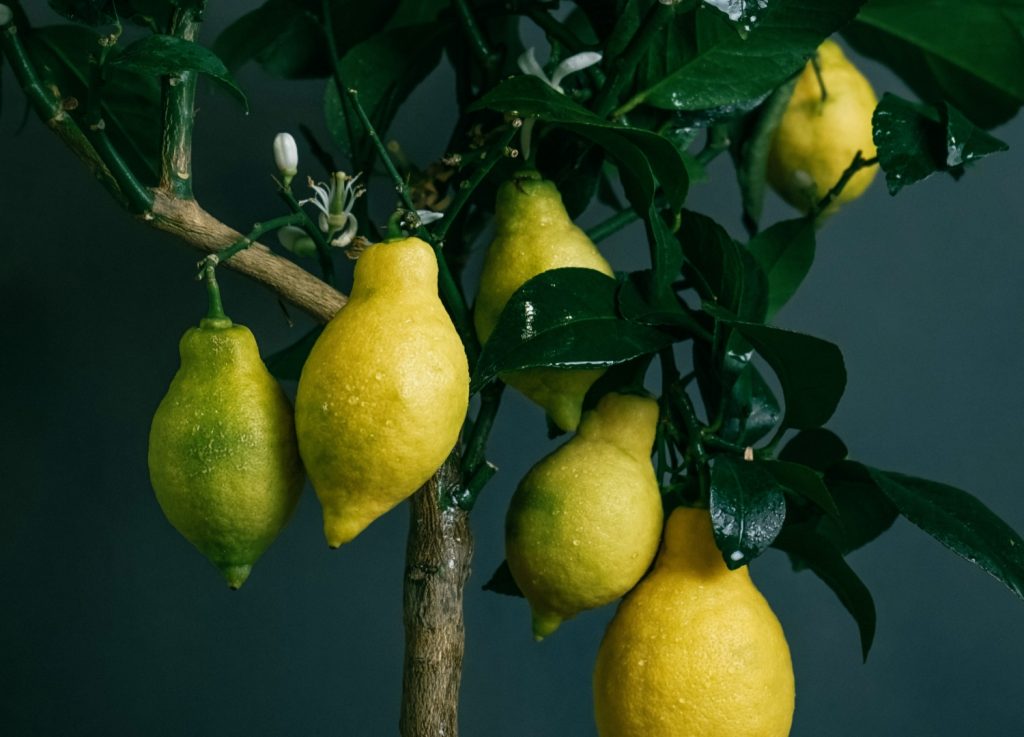
The problem: extreme weather
Lemon trees grow best in temperatures ranging from the upper 70s to the lower 90s. They thrive in temperate climes where there’s very little fluctuation in the weather. When cold air hits, or when the mercury rises to the 100s, your lemon tree can suffer. If you notice more yellow leaves on your lemon tree after a cold front or during a heat wave, it’s almost certainly because of the extreme weather.
The solution: protect the plants
If a late-season freeze is in the forecast, move your lemon tree indoors or cover it with a packing blanket to protect it from freeze damage. Conversely, if a heat wave is coming, take measures to ensure your lemon tree will stay cool. Move the plant to a spot where it will get afternoon shade, and make sure its soil stays moist. Taking a few precautionary measures will help prevent your lemon tree from developing yellow leaves as a result of extreme weather.
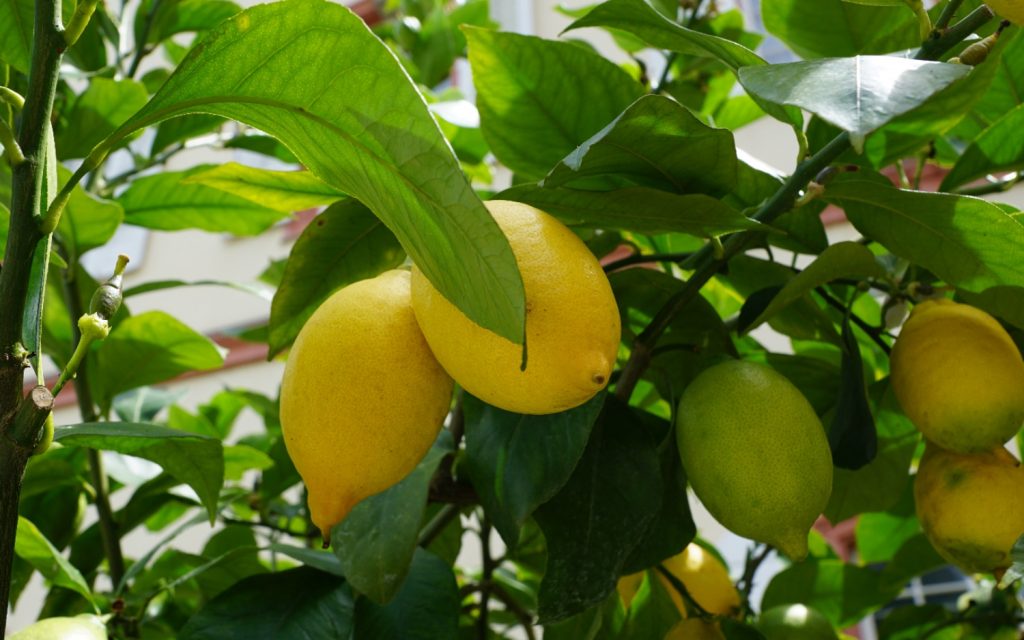
The problem: inappropriate soil
If your lemon tree is growing in the wrong type of soil, or if it’s growing in soil that has the wrong pH, that can also contribute to yellowing foliage. Overly sandy soils that stay too dry, compacted clay-rich soils that stay too moist, and soils that are too alkaline can spell trouble for your lemon tree. Inappropriate soil texture makes it difficult for your lemon tree to balance moisture intake. And, as we already know, too much or too little moisture can contribute to unhealthy foliage. Meanwhile, soils that have the wrong pH can influence nutrient availability, leading to mineral deficiencies and, again, yellow leaves.
The solution: test the soil and amend it
Take a closer look at the soil your lemon tree is planted in. Ideally, it should be a well-draining sandy loam, containing a moderate amount of decaying plant materials to allow for some moisture retention. The soil should have an acidic pH, anywhere from 5.0 to 6.5. If your soil doesn’t meet these requirements, then it needs to be amended. Add sand to break up dense, overly fertile soils, and compost to make nutrient-poor sandy soils more nutritious. If your soil is too acidic, raise the pH with baking soda, oyster shells, or dolomitic lime. If the soil is too alkaline, then use aluminum sulfate or garden sulfur instead. Correcting the soil will go a long way toward improving your lemon tree’s yellow leaves.
The problem: not enough sunlight
Lemon trees need 6 to 8 hours of sun per day. In hotter growing zones where temperatures regularly rise into the 100s, they benefit from some afternoon shade. But in cooler regions, these trees are often happy to sit in the sunshine all day long. If your lemon tree’s leaves are turning yellow, watch it over the course of the day. How much sunlight is it getting? If your lemon tree receives less than 6 hours of sun, and its foliage is worsening, then it could probably benefit from more light.
The solution: move the plant to a sunny location
If your lemon tree’s foliage is yellow as a result of low light conditions, the only way to encourage healthy growth is to give it more sun. Potted plants are easy enough to deal with — simply move them to a sunnier spot. But if your lemon tree is growing in the ground, it’ll need to be transplanted. Choose a new location that receives at least 6 hours of sun per day. Once your lemon tree gets enough light, it will be able to photosynthesize correctly, and its new foliage will emerge a deep green.
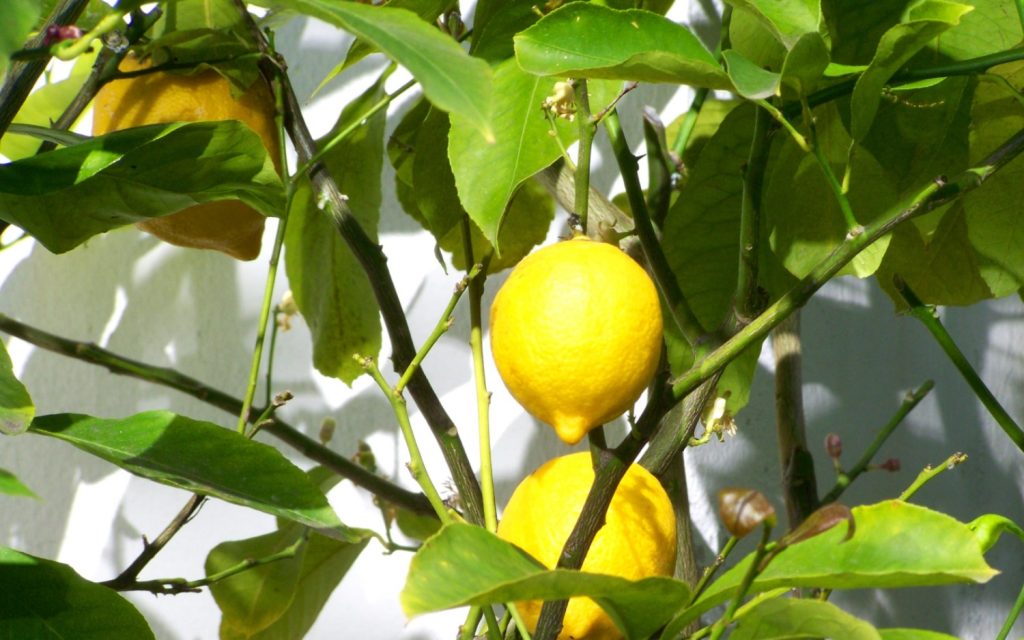
Do you need to prune a lemon tree’s yellow leaves?
When a plant’s leaves turn yellow, they seldom turn green again, so it’s generally safe to remove yellow leaves. However, this depends upon the lemon tree’s overall health. If your lemon tree is 70% yellow, then removing all of the yellow leaves could put the plant in shock. Yellow leaves don’t photosynthesize as well as green ones, but they can be a lifeline for a stressed plant. In these cases, it’s best to wait until the lemon tree starts producing new green leaves before pruning away the yellow ones.
Addressing the underlying cause of your lemon tree’s yellow leaves will restore its health and improve the appearance of its foliage.
